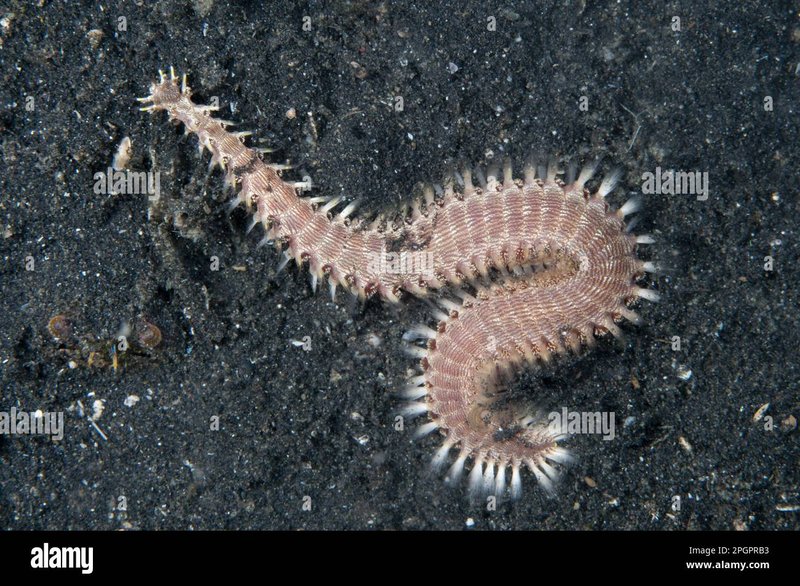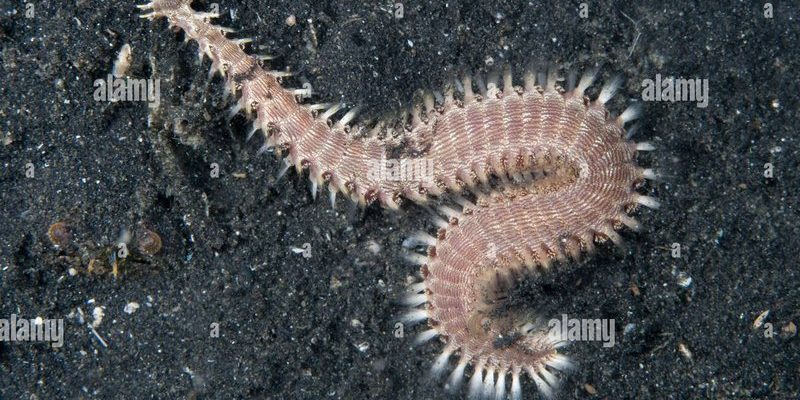
Bristle worms, particularly the **Polychaeta class**, thrive in diverse marine environments, from shallow coastal waters to the deep sea. You might be wondering why their decline matters. Well, a drop in their numbers can signal broader environmental issues, impacting not just marine habitats but also human activities. Let’s dive into the factors behind these crashes and why they should concern us all.
Understanding Bristle Worms: The Ocean’s Cleanup Crew
Bristle worms are fascinating creatures, belonging to the segmented worms group. They have bristles on their bodies, which help with movement and sensation. You might spot them in your aquarium or at the beach, wriggling through the sand. These worms are crucial because they feed on detritus, which is organic matter that has settled on the ocean floor. Think of them as the ocean’s clean-up crew, processing waste and recycling nutrients back into the ecosystem.
Not only do they help with waste breakdown, but bristle worms also serve as food for many marine animals. Fish, crustaceans, and even birds depend on them for sustenance. So, when bristle worm populations crash, it’s not just a loss for the worms themselves—it creates ripples throughout the food web, affecting countless marine species.
Factors Behind Population Crashes
So, what causes these population crashes in bristle worms? Here are a few of the main culprits:
- Pollution: Chemicals and waste entering the ocean can be toxic. This pollution can alter the habitat and survival rates of bristle worms.
- Climate Change: Changes in temperature and ocean acidity can impact their breeding and growth. Think of it like a plant struggling to grow in a changing climate.
- Overfishing: The removal of predators or competitors can disrupt the balance of the ecosystem, leading to sudden fluctuations in worm populations.
Each of these factors can act separately or together, creating a perfect storm for bristle worms and other marine life.
The Impact of Habitat Destruction
Habitat destruction is another major issue that can lead to a decline in bristle worm populations. When we think of habitat loss, we often picture deforestation, but it’s just as prevalent underwater. Activities like dredging, coastal development, and pollution can destroy the delicate ocean floor that bristle worms call home.
Coral reefs, seagrass beds, and mangroves are essential habitats for many marine species, including bristle worms. If these environments are damaged or removed, bristle worms will struggle to survive. Without their homes, they can’t thrive—or even exist—leading to a significant decrease in their populations. This is alarming because it doesn’t just affect the worms; it can have cascading effects on the entire marine ecosystem.
The Role of Science in Monitoring Populations
Scientists play a crucial role in understanding and monitoring bristle worm populations. Through various research methods, they track changes in these populations and their habitats. One common approach is using **sampling techniques**, where researchers collect samples from different environments to assess the abundance and health of bristle worms.
By analyzing this data, scientists can identify trends and potential threats that these worms face. Moreover, this information can help policymakers make informed decisions about marine conservation efforts. For instance, if a specific area is facing rising pollution levels, targeted actions can be taken to mitigate that impact.
Mitigating the Decline: What Can We Do?
You might be wondering what we can do to help bristle worms and their populations rebound. Here are a few simple yet effective actions we can take:
- Reduce Pollution: Be mindful of waste disposal and use eco-friendly products. Even small changes, like reducing plastic usage, can have a big impact.
- Support Sustainable Fishing: Choose seafood from sustainable sources to help maintain a balanced ecosystem. This keeps predator-prey dynamics stable, benefiting bristle worms.
- Participate in Cleanups: Join local beach or underwater cleanups to help remove trash and debris from marine habitats.
By supporting these initiatives, we can play a role in ensuring that bristle worms and other marine species have the chance to thrive.
In closing, bristle worms may seem like small players in the vast oceanic theater, but their role is crucial for the health of marine ecosystems. When their populations crash, it raises important questions about our environment and how we impact it. Understanding the factors that contribute to their decline is essential for developing effective conservation strategies.
By staying informed and taking action, we can support the health of marine ecosystems. Remember, every little effort counts. So the next time you hear about bristle worms or see them while exploring the ocean, you’ll know just how vital they are. And who knows, maybe you’ll even develop a deeper appreciation for these tiny but mighty creatures!

